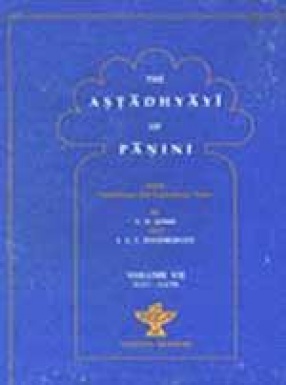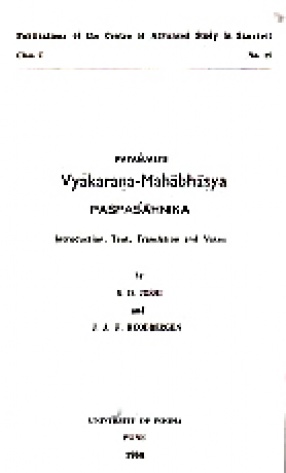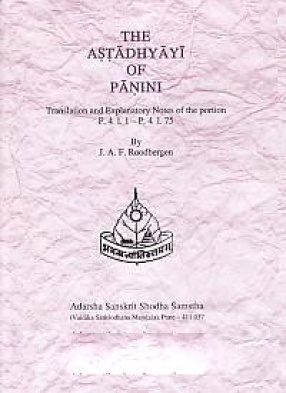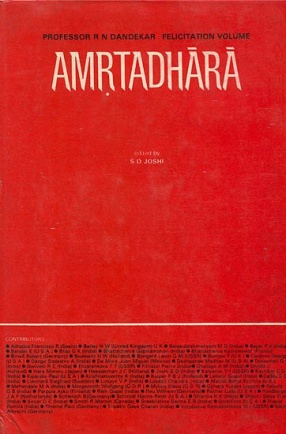Astadhyayi literally means ‘collection of eight adhyayas’. This multi-volume set is a translation and critical explanation of one of the greatest monuments of human intelligence, and differs greatly from the translations published earlier. Panini provides with the precise knowledge of an old Indo-Aryan language. No other language to this day has been so perfectly described. Why publish another edition of the text of the Astadhyayi, and another translation? The short answer is that this work differs from the rest in at least seven respects, as follows:01/ Attention is paid to the interpretation of the multi-purpose particle ca in Panini’s sutras. This has a direct bearing on the division of the rules, and, therefore, on their interpretation.02/ The conventions of anuvrtti and nivritti of rules or parts of rules have been systematically applied. This also has a direct bearing on the interpretation of the rules.03/ On the basis of above 1 & 2, an attempt is made to identify interpolations and historical layers in the text of the Astadhyayi as presented by the KV and followed by all Indian and Western editors.04/ Examples of rules are checked wherever possible against attested usage outside grammatical literature. Here the work done by the Deccan College Sanskrit Dictionary project proved to be very useful.05/ As regards conflict-solving procedures adopted in the Astadhyayi, tradition has both confused and multiplied conventions. This led to the phrasing of exceptions and counter-exceptions to the point that nearly anything goes, somewhat like what happened to Marxist doctrine. In this work, these procedures have been re-defined and provided with a clear domain of their own. They have also been simplified. Both the re-definition and the simplification have been carried out on the basis of a strict interpretation of the Astadhyayi itself.06/ In the interpretation of the Astadhyayi, apart from the Mahabhasya, importance has been attached to examples transmitted by the KV, different from those provided by Patanjali, and which may provide a clue as to the authentic meaning of a Paninisutra.07/ Whenever tradition has manifestly re-interpreted a rule to accommodate usage, this has been pointed out. PANINI’s historical existence is generally accepted. According to tradition he hails from a place in the Northwest of the subcontinent, now in Pakistan. His date is a vexed question, but editors of the present volume place is around 550 BC, which makes him a slightly older contemporary of the Buddha. It is certain that Panini took his place in a line of grammarians and teachers of Sanskrit. He is known to have mentioned ten predecessors by name. It goes without saying that he must have borrowed a considerable quantity of material, whether literally or in a modified form. But all this cannot hide his originality as a system-builder, his amazing ability to formulate a comprehensive grammatical system. If it is accepted that Panini was the author of the Astadhyayi in the sense that he invented and developed the grammatical system on which the Astadhyayi is based, the question may be asked whether Panini was the author of the Astadhyayi as know it. This question is to be decided on the basis of inconsistencies in the present text of the Astadhyayi. Editors of this work assume that Panini was not the author of the Astadhyayi in the form in which we know it. Rules have been interpolated. There is evidence that whole sections have been added. And finally, it is doubtful whether the rules dealing with the Vedic language formed part of the original body of rules.
The Astadhyayi of Panini (Volume VII)
In stock
Free & Quick Delivery Worldwide
reviews
Bibliographic information
Title
The Astadhyayi of Panini (Volume VII)
Author
Edition
1st ed.
Publisher
Sahitya Akademy, 1998
ISBN
8126005890
Length
151p.
Subjects







There are no reviews yet.